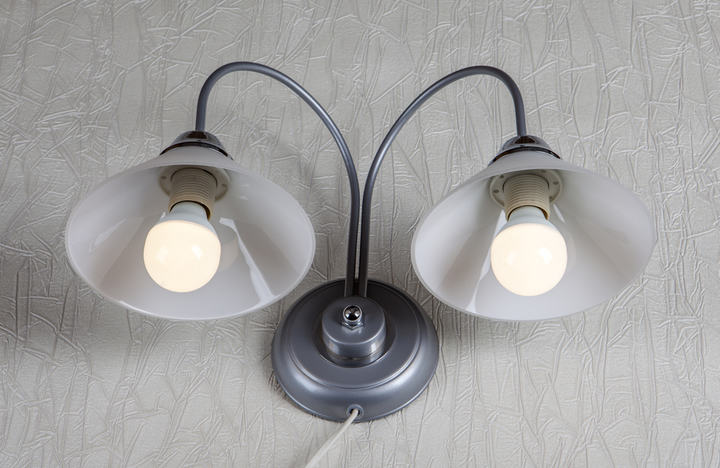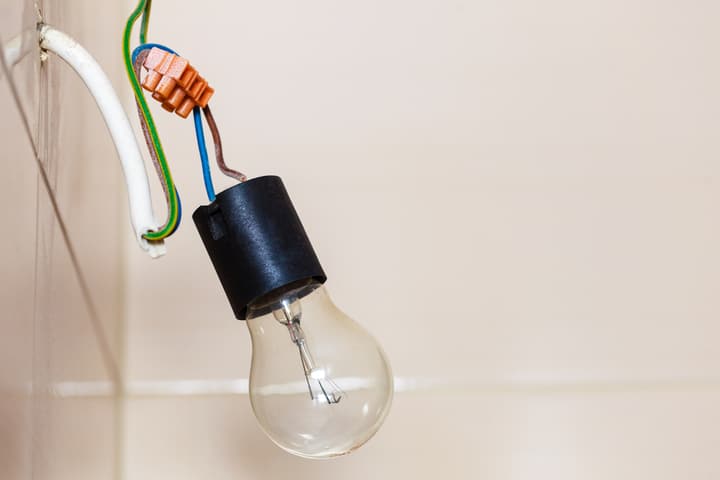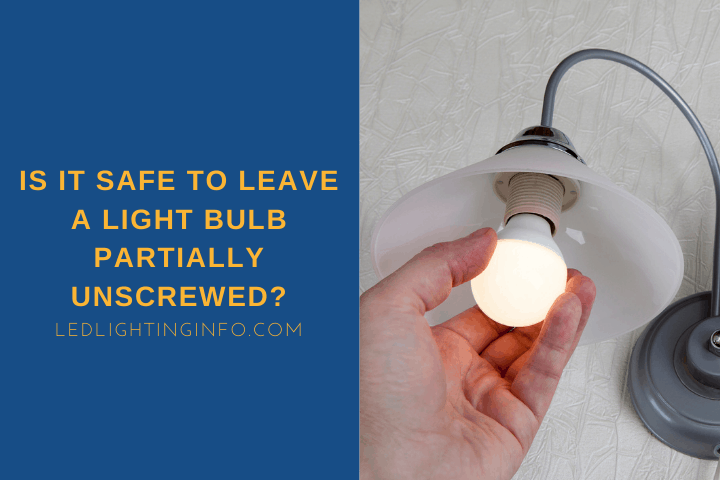Most of the time, you’ll be able to tell whether a light bulb is loose in the socket, and you can either tighten it or remove and replace it as required.
But what about when you can’t tell if a bulb is loose? Or if there’s a bulb you know needs tightening but it’s not a fitting you can easily reach? Do you have a potential hazard to deal with, or is it something that can wait?
There’s no electrical danger to leaving a bulb partially unscrewed in a socket, but if it’s too loose, it could fall and shatter, which could be a hazard. A partially unscrewed bulb is generally safer than an empty socket which could ignite a spark if contacted by dust or lint.
In this article I’ll explain:
- What dangers, if any, a loose bulb presents
- If electricity will run through a socket with a loose bulb
- Whether it’s best to leave a dead bulb in a socket
What Are The Dangers Of A Loose Bulb In A Socket?

A loose bulb will be evident and easy to fix, right?
Well, not always. Your bulb could typically work while being a little loose.
Or even if it’s noticeably not quite right, some fittings aren’t the easiest to reach, particularly if they’re on a high ceiling or they’re recessed.
It might be that you simply don’t have the time or access to fix a loose bulb immediately.
Don’t panic if you think you might have a loose light bulb in one of your sockets.
People often worry that anything electrical isn’t safe if it’s not set up exactly right. Still, a loose bulb isn’t going to suddenly set your house ablaze or start sending dangerous sparks flying.
Suppose a bulb is only very slightly loose. In that case, you might not even notice a problem at all – the contacts could still be closing the circuit, and the bulb might work exactly as intended.
You’d have no reason to suspect that the bulb wasn’t completely tight.
However, if the bulb is a little looser, it may not be in constant contact with the circuit.
In this instance, the light may flicker, as the circuit is constantly completed and then cut off.

Again though, there’s no real cause for concern here, although the bulb will probably burn out faster if it’s flickering, and it’ll be annoying too.
And if the bulb is quite loose, chances are the contacts aren’t touching at all – so all you’ll have is an incomplete circuit with no light.
So, does that mean there are zero dangers to a loose bulb?
Not exactly, although the problems may not be ones you’ve considered.
Firstly, there’s the health and safety issue of a non-working bulb if it’s quite loose within the socket.
Light bulbs keep us safe by illuminating hazards around the home or workplace. If a bulb is too loose that it won’t work, you might have to cross a room in darkness until it’s replaced, which could be a small danger.
Also, if the bulb is loose and barely in the fitting, there’s a risk that it could fall out of the socket entirely. If a bulb is above a hard floor, there’s the potential danger of it shattering.
The glass might break and leave shards, which could harm you if not properly cleaned up.
There’s also the small amount of mercury to contend with if the bulb was a CFL – handle any shards with gloves and air out the room.
The final danger to consider should be common sense, but if you suspect a bulb is loose because it’s flickering or you just aren’t sure it’s completely screwed in, don’t try to tighten it by hand if it’s been switched on recently.
Some bulbs get extremely hot. Incandescent bulbs will be very high temperatures no matter where you touch them, while LED bulbs get hot at the base, which can catch you by surprise since the glass or resin cover is only warm.
You can burn yourself if you don’t switch a bulb off before you touch it.
Will Electricity Still Be Running Through The Bulb If It’s Unscrewed Slightly?

Remember that electricity is really quite simple – it requires a closed circuit to do anything. Without a closed circuit, there is zero current.
So, will the electricity run through a bulb if it’s unscrewed slightly?
Potentially yes, but only if it’s in full contact with the fitting – at which point the bulb will be working fine.
If the bulb is a little looser and not completely in contact with the fitting, then no current will flow, as the circuit will be open.
There’s no electrical danger, as nothing is running through an open circuit.
Also read: Can You Change A Light Bulb With The Power On?
Should I Leave A Dead Bulb Partially Unscrewed In The Socket?
If you have a light bulb that blows, the safest thing you can do is leave it in place.
The blown bulb will have zero current running through it because the internal components will have physically broken. So the circuit is open, and no current will flow through it.
You can, if you prefer, partially unscrew a bulb in a socket and leave it there, but there’s no reason to.
You aren’t saving money because a dead incandescent bulb uses zero electricity. In contrast, a dead LED uses such a minuscule amount sometimes that you’d never even notice it.
However, leaving a bulb in place and partially unscrewing it are much safer options than completely removing it, leaving an empty socket.
Empty sockets are dangerous because, while the current isn’t flowing with nothing closing the circuit, that’s not to say something couldn’t get into the socket to bridge the gap.
That something could be the curious fingers of a child. Perhaps it’s dust and lint that you’ll find in any home.
Dust can ignite a spark if it gets into an empty socket, which could cause a fire. You might even have issues if a bug was to fly into the socket.
My article explains more, but you should never leave a socket exposed.
If you can’t replace a light bulb immediately, then just leave the dead bulb in place until you can – you aren’t losing any money on your electricity bill if you do.
Further reading: How To Dispose Of LED Light Bulbs The Right Way?
Final Words
Loose light bulbs aren’t something you need to lose sleepover. A loose bulb isn’t a huge electrical hazard, and as long as the bulb is secure, it’ll be fine sitting in place until you’re able to replace it.
It’s more dangerous to remove a bulb and leave a socket exposed, but when it comes to dead bulbs, just leave them be – don’t unscrew them and leave them loose; they’re fine being left there until you’ve been able to pick up a new one, or had a replacement shipped to you.
Looking for an LED bulb but not sure what type you need?
Check out my free bulb picker and select the right bulb within few clicks.

